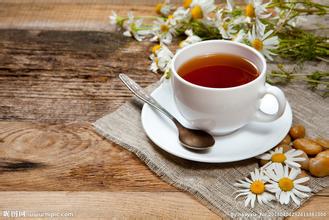Description of coffee flavor of Incht Manor in Guatemala with rich taste introduction to the taste of varieties in producing areas
In 1982, the leftist guerrillas across the country merged to form the "National Revolutionary Alliance of Guatemala" and armed struggle spread throughout the country. Farmers dissatisfied with the overthrow of the Arbens regime organized a guerrilla group in which more than 100,000 people were killed and millions displaced. In September 1982, the persecution of the local Mayans by the Guatemalan army was close to genocide, and more than 9000 Mayans were killed. Since 1983, persecution on the part of the Government of Guatemala began to decrease and the country began to democratize again. However, the disparity between the rich and the poor has not been solved, and only a small number of people who account for 1% own more than 60% of the arable land and wealth. In 1985, Guatemala reorganized the general election.
Guatemala is bordered by Mexico to the north and El Salvador and Honduras to the south. Guatemala produces about 3.5 million bags of coffee each year, and raw coffee beans account for 40 per cent of the country's total agricultural exports. This country, which mainly grows and exports coffee, has fertile soil suitable for coffee trees, suitable climate, abundant water resources and high altitude planting height. There are also many well-known producing areas in its territory, such as Antigua, Vivette Nanguo, Koban, Alcatel Nanguo, Attland, New Oriental, St. Marks and so on. Vivette Nango and Antigua are best known to coffee lovers.
"Huehuetenango" is translated as "Vivetta Nanguo" in Chinese. Whether in reading or in writing, the name sounds so good that it reminds me of the narino producing area of Colombia. A beautiful name, of course, must be matched with a beautiful flavor.
Vivette Nan Fruit is located in the highlands of northwestern Guatemala, growing at an altitude of 1800-2100 meters. It is the highest coffee-producing area in the country and is famous for producing high-quality beans. Due to the large number of rivers and lakes in Guatemala, the Vivette Nanguo region is rich in mountains and water resources, dry climate but abundant water resources, and complete water conservancy facilities in the region, coffee is mostly washed and processed. Vivette Nanguo coffee, rich taste, with a high mellow thickness, smoky taste is its most distinctive flavor.
Generally speaking, Arabica coffee grows at an altitude of about 2000 meters, while Robusta grows at an altitude of about 900m. If the altitude is too high, the coffee tree will frost because the temperature is too low, and even can not survive. And Vivette Nanguo coffee even if planted in the highlands of nearly 2000 meters above sea level, it is not easy to appear frost phenomenon, high but not cold growth environment has created high-quality extremely hard beans. This is entirely due to the warm, dry air blowing from the plains of Mexico, which protects the coffee trees from frost.
Like Costa Rica, El Salvador, Mexico, Honduras and other Central American countries, Guatemala's classification is based on altitude. Coffee produced at high altitudes is generally of higher quality than at lower altitudes, because the higher the altitude, the lower the temperature. At high elevations, the slower the coffee grows, the more beneficial it will be to the accumulation of good substances. That's why there is a way to classify quality by altitude. So what is the grading method based on altitude? Let's take Guatemala as an example. The higher the altitude, the higher the density of coffee beans and the higher the grade of raw coffee beans:
The highest grade is SHB (Strictly Hard Bean) very hard beans, which are grown above 1350m above sea level.
Followed by HB (Hard Bean) hard beans, planted at 1200m~1400m above sea level.
There are also SH (Semi Hard Bean) slightly hard beans, which are planted at an altitude of 1200 m.

Important Notice :
前街咖啡 FrontStreet Coffee has moved to new addredd:
FrontStreet Coffee Address: 315,Donghua East Road,GuangZhou
Tel:020 38364473
- Prev

Description of Coffee Flavor of La Tisa Manor in Guatemala introduction of Fine Coffee in Variety producing areas
Guatemala is located in the center of North and South America, and its geographical location occupies an important position in Central America. Guatemala covers an area of about 108899 square kilometers. The land features can be divided into plateau volcanoes, lowland tropical forests, volcanic sandy shore plains along the Pacific coast, and virgin lands along the Caribbean Sea. The SierraMadre Mountains of Central America span east and west of Guatemala, covering an area of
- Next

Introduction to the treatment method of Grinding degree for describing the Flavor of Burman Manor Coffee in Kenya
Kenya has a total population of 41.8 million (2013), with a population growth rate of 2.7 per cent. There are 42 ethnic groups in the country, including Kikuyu (17%), Lucia (14%), Kalenjin (13%), Luo (10%) and Kangba (10%). In addition, a small number of Indians and Pakistanis, Arabs and Europeans are located in tropical monsoon areas, most of which have a savanna climate.
Related
- Does Rose Summer choose Blue, Green or Red? Detailed explanation of Rose Summer Coffee plots and Classification in Panamanian Jade Manor
- What is the difference between the origin, producing area, processing plant, cooperative and manor of coffee beans?
- How fine does the espresso powder fit? how to grind the espresso?
- Sca coffee roasting degree color card coffee roasting degree 8 roasting color values what do you mean?
- The practice of lattes: how to make lattes at home
- Introduction to Indonesian Fine Coffee beans-- Java Coffee producing area of Indonesian Arabica Coffee
- How much will the flavor of light and medium roasted rose summer be expressed? What baking level is rose summer suitable for?
- Introduction to the characteristics of washing, sun-drying or wet-planing coffee commonly used in Mantenin, Indonesia
- Price characteristics of Arabica Coffee Bean Starbucks introduction to Manning Coffee Bean Taste producing area Variety Manor
- What is the authentic Yega flavor? What are the flavor characteristics of the really excellent Yejasuffi coffee beans?

